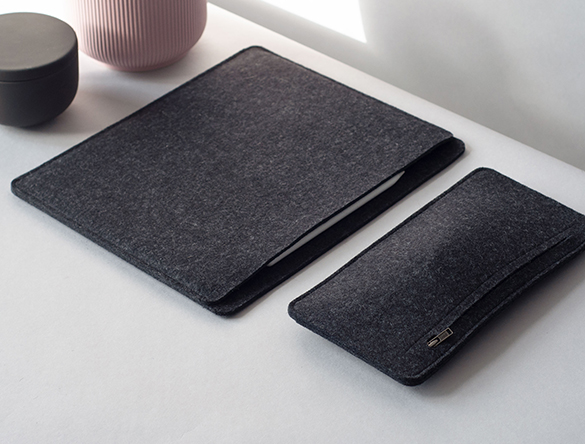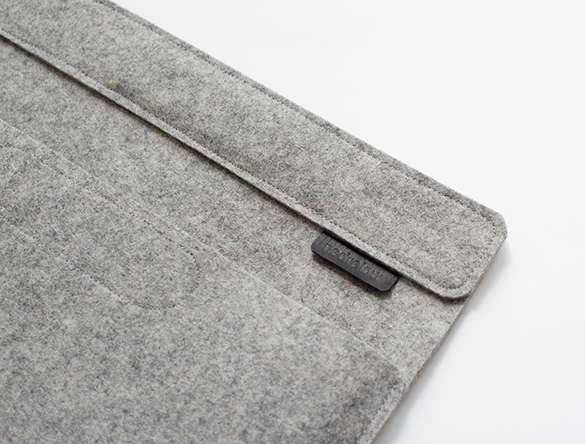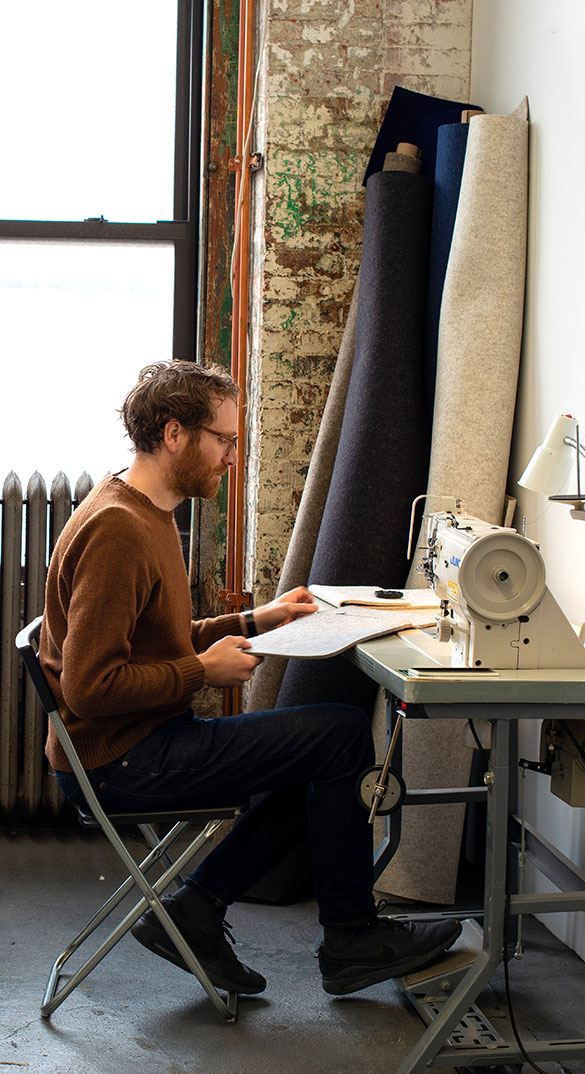
Meet the Maker
Scott Nedrelow
Scott Nedrelow is a visual artist who lives and works in Brooklyn, New York. Since 2010, when the first iPad was introduced, he has been designing and constructing felt tech products. His first case was called BOOK and was the original case for the iPad cleverly made to look like a book. He used FilzFelt's 100% Wool Design Felt in the original BOOK and quickly started making a simple and sleek sleeve for iPads with other tech and home accessories to follow. His work as a visual artist and designer is in the collections of the Walker Art Center, Minneapolis Institute of Art, The Whitney Museum, SFMOMA, and MOMA.
Can you tell us a little about your background as a designer?
I went to an art school, but have little background as a designer. I don’t consider myself to be a designer necessarily. I personally make everything that I send out, so my role is broader. After art school, I lived in northern Minnesota for a couple of years and made and sold about two thousand abstract expressionist paintings on eBay. It was an experiment that started me down a path to an e-commerce business. I wanted to continue with a business that helped me work out of a studio, but also in an area that wasn’t as related to visual art. I appreciate being able to make things that people use in their daily life and also at the same time to make visual art that doesn’t have a specific utilitarian purpose.
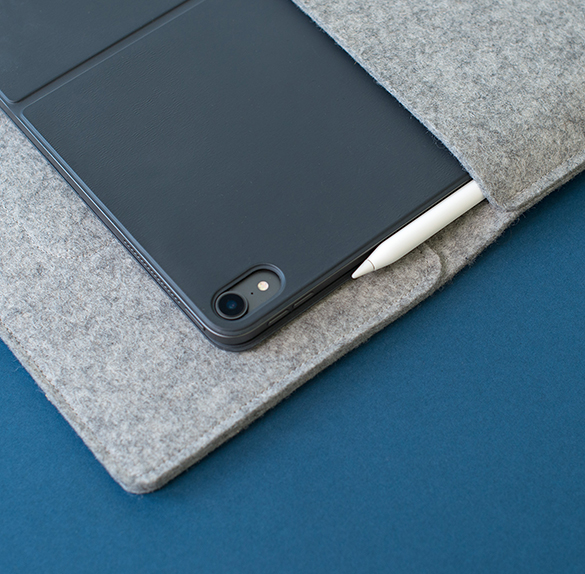
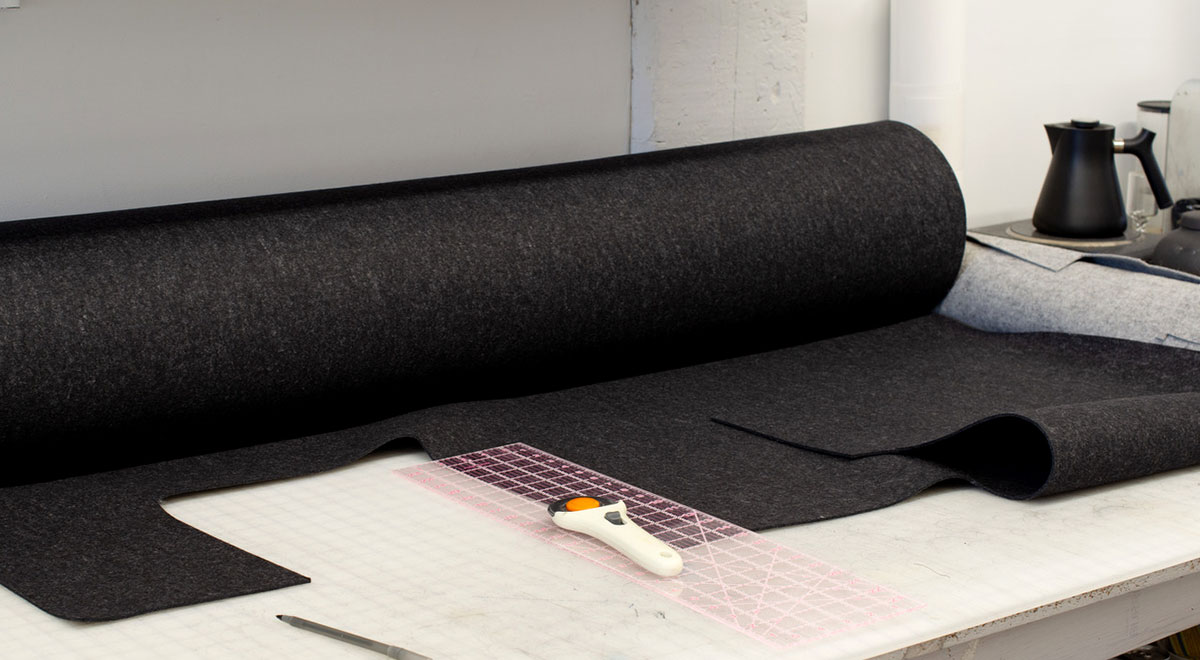
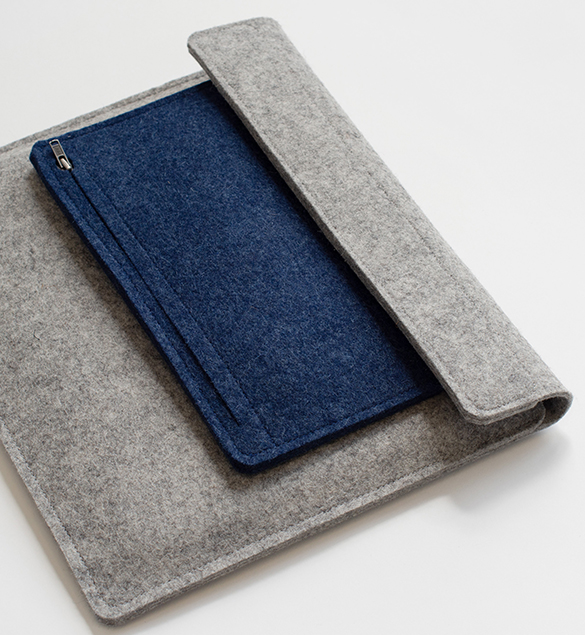
Where do you look for inspiration?
Recently I’ve been interested in looking at the ways portable Victorian writing desks were used. There are photos of the Bronte sisters’ portable desks showing everything in them, like a puzzle to figure out. I’ve also been reading about Japanese gardens and their relationship to art as a living painting.
You started as a fine artist—what drew you to designing minimal technology sleeves? What first got you interested in product design specifically?
I do remember seeing Objectified in 2009, Gary Hustwit’s documentary about industrial design that partially focused on technology. For the last ten years, I’ve been making visual art and products in tandem, in the same studio. There has been an ebb and flow between them that keeps evolving in both daily practice and financial sense. Sometimes the questions or thinking around each overlap. In an art context, the term minimalism carries a specific history and approach that in my mind has to do with allowing the complexity of a material to come forward. The label minimalist was rejected by many of its practitioners in an art context because it’s not about paring things down or making things sparse—it’s conversely about how to highlight and draw attention to a material. Minimalism in an art context, especially in sculpture, is also about considering how the presence of one material or object resonates with things around it.
What does a typical day in your studio look like?
It’s a combination of attempting to run every aspect of a commerce business—making, sending the products, photographing, and marketing the products. And also carving out time to engage with making visual art—mostly photo and video work.
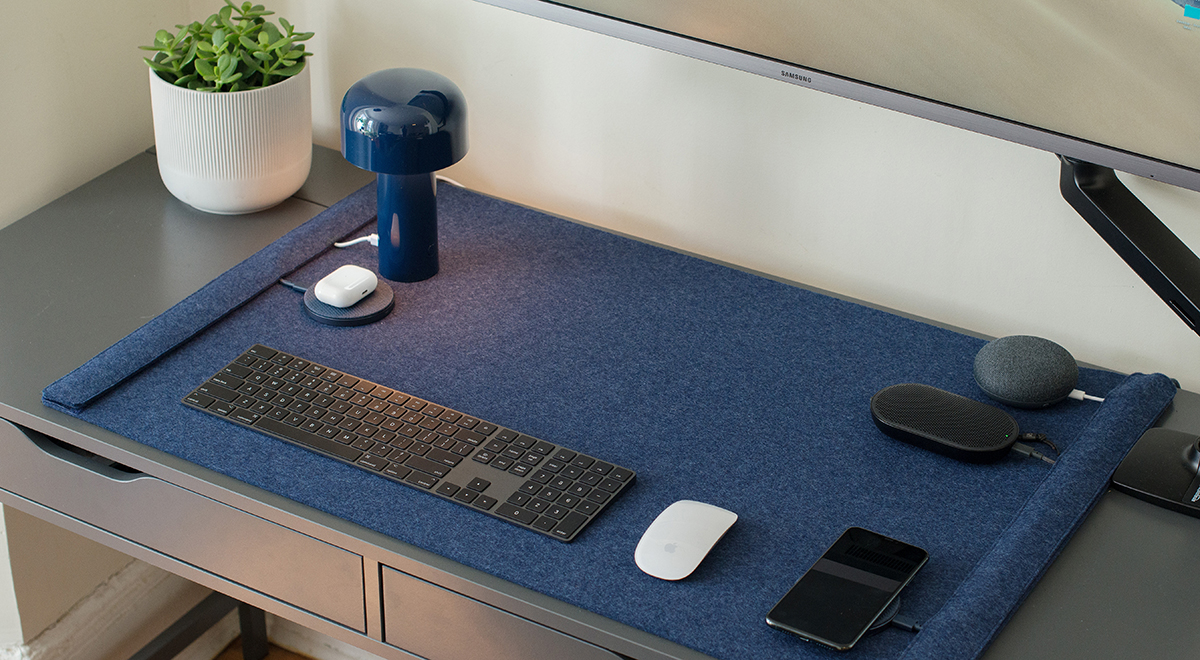
Why is felt important to designing your products? (Have you tried other materials previously? What advantages does felt have over those other materials?)
Using the wool felt is about responding to the aluminum and glass in the design of technology devices. Without knowing about the specific history of the materials there is a striking tactile contrast between aluminum and wool felt. The non-woven material nature of wool felt gives it a singular kind of ’thingness’ that I also like. Beyond that because of the very long history of people using wool felt, there is a deeper contrast to the newness of technology. I’ve stuck with the all natural wool felt material because for me it grounds the experience of using technology like MacBooks and iPads in daily life. I was also aware of and appreciated the material being used in various ways in an art context, especially in the work of Robert Morris and Joseph Beuys.
You grew up in the midwest — did life in Minnesota have an impact on your design aesthetic? Did you see a shift in your aesthetic after moving to Brooklyn?
Life in Minnesota gave me an opportunity to develop an aesthetic. The Twin Cities has a strong art community that I benefited from in many ways. There has been continuity to my aesthetic with life in Brooklyn so far. The biggest benefit of being in Brooklyn is the opportunity to see more art in person.
What projects are you working on that have you excited for the year ahead? Can you share any sneak peeks of what’s to come?
I’m working on a system of modular sleeves and accessories that use magnets to attach to each other — so a combination of different style pockets and sleeves can be used together. Also, I’ve been interested in using wool felt to try and update a traditional desk blotter / pad—in particular to use the side rails for cable management. Right in the current moment, I’ve been working on repackaging some previous multi-channel video installations and making them available for the surplus of extra screens people are surrounding themselves within quarantine—one project gives a view of the horizon line at the ocean while the light is coming up or down at dusk and dawn over several days. The horizon line slowly moves up and down through the frame as the light fades in or out, drawing attention to the illusion of the sunrise / sunset and recasting it as an earthrise / earthset (scottnedrelow. com/earthrise).
LEARN MORE >